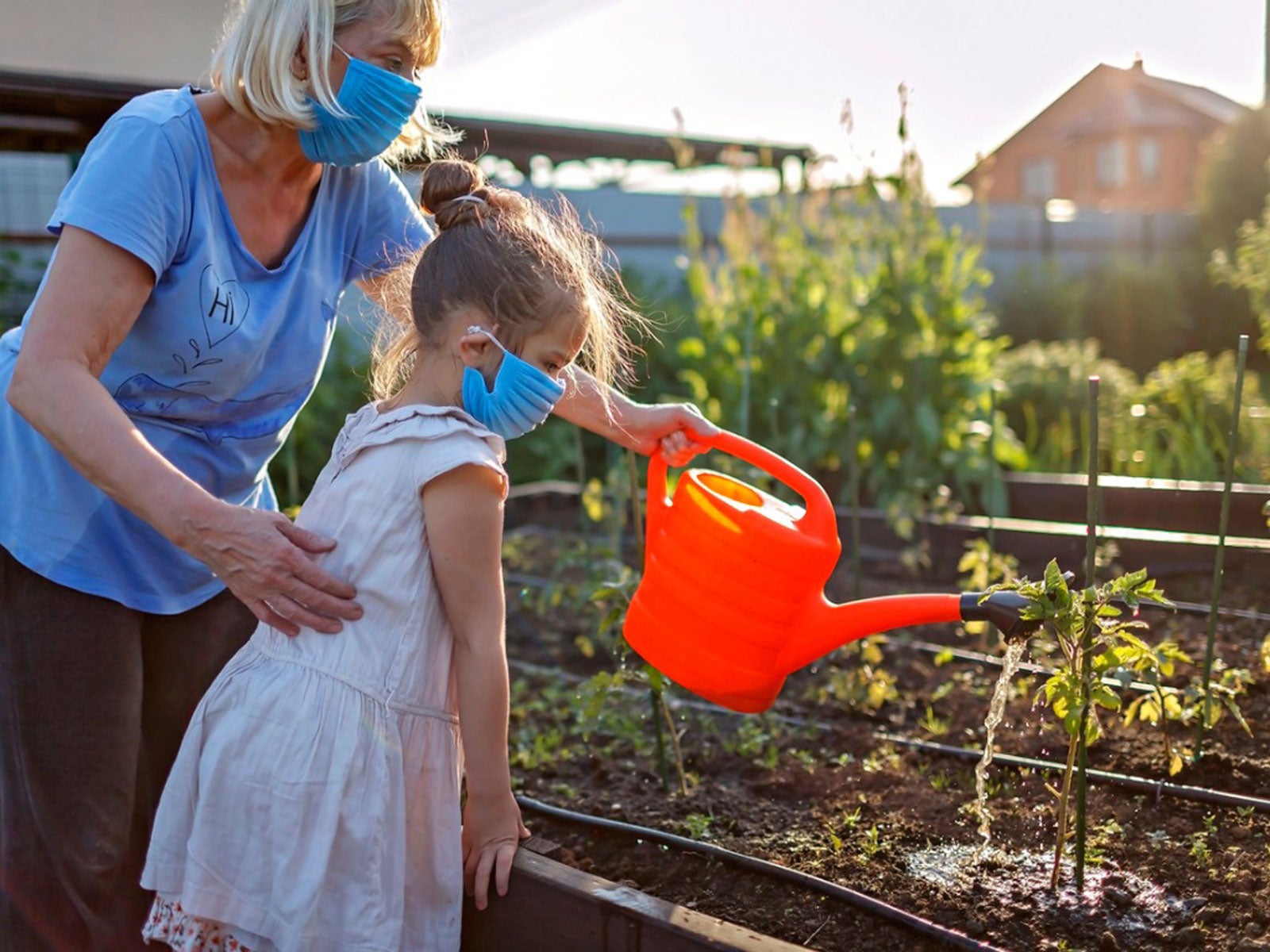Off-Season Gardening With Kids – Garden-Based Learning Through Fall And Winter


More parents are choosing to homeschool this fall to keep their children safe from COVID-19. While that is a big undertaking, much help is available to parents who choose to go that route. Many websites are devoted to hands-on activities for children beyond the fundamentals. Garden-based learning is a fun way to teach aspects of science, math, history, and patience!
With fall and winter right around the corner, parents may be looking for off-season gardening ideas. Learning through gardening activities can work as a school project or for any parent who wants to teach their kids how to nurture nature.
Off-Season Gardening with Kids
COVID gardening with kids can bring them to a closer relationship with nature and they can learn many life skills too. Here are just a few off-season-gardening activities to share with children of all ages.
Outdoor Activities Garden Ideas During Off-Season
- Teach where plants and insects go during the winter. Take the opportunity on a crisp, fall day to go outside and walk through the yard, pointing out how plants are preparing for winter and why. Also, some plants, like annuals, won’t return unless they reseed. Insects, too, are preparing for winter. Butterflies and moths, for example, are preparing to overwinter in one of their life stages: egg, caterpillar, pupa, or adult.
- Plan a garden for next year. Get children excited about finding a sunny place in the yard to start a garden next year. Discuss the preparation work needed, when it should be done, and what tools you will need. Then for part two, which can be on a rainy or cold day inside, go through seed catalogs and decide what to plant. Everyone can pick something they will eat, be it a fruit such as strawberries, a vegetable such as carrots, and/or a fun project like growing Halloween pumpkins or square watermelons. Cut pictures out of the seed catalogs to glue onto a chart showing what they will plant and when.
- Plant spring-flowering bulbs in the yard. This also could be a two-parter. For one activity, look through bulb catalogs and decide which bulbs to order and where to plant. Most bulbs need a sunny, well-draining location. Kids can cut pictures out of the bulb catalogs and make a chart showing what they will plant. For the second part, plant the bulbs in the preselected sites. If garden space is not available, plant bulbs in containers. If you live very far north, you may need to move the container to the garage for winter.
Indoor Garden-Based Learning Activities
- Make a floral gift for Thanksgiving or Christmas. Buy some wettable floral foam to use inside small, plastic to-go cups as vases. Pick any remaining flowers from your garden, plus ferns or other filler, to make a floral arrangement. If you need more flowers, grocery stores carry inexpensive bouquets. Flowers such as zinnia, mum, daisy, carnation, and coneflower are good choices.
- Grow pot people. Using small clay pots, paint a face on each one. Fill the pot with soil and sprinkle grass seed. Water and watch the hair grow!
- Start a windowsill garden. Collect containers, potting soil, and a few plants to grow on the windowsill. Herbs make a nice grouping, and the kids can choose which ones. If transplants are hard to find in fall, try grocery stores. If none are available, buy seed from an online seed catalog.
- Learn about peculiar plants. Pick up one or two odd plants at the garden center, such as a sensitive plant, whose ferny leaves close upon touch, or a carnivorous plant like Venus flytrap that eats insects. Take a trip to the library or research online to find out the history of these plants.
- Grow a houseplant! Buy an avocado at the grocery store and grow a plant from its seed. Try planting peach pits or lemon seeds. You can also try growing other plants too, like carrot or pineapple tops.
Gardening tips, videos, info and more delivered right to your inbox!
Sign up for the Gardening Know How newsletter today and receive a free copy of our e-book "How to Grow Delicious Tomatoes".

After graduating from Oklahoma State University with a degree in English, Susan pursued a career in communications. In addition, she wrote garden articles for magazines and authored a newspaper gardening column for many years. She contributed South-Central regional gardening columns for four years to Lowes.com. While living in Oklahoma, she served as a master gardener for 17 years.
-
 Never Plant Seedlings Until They Pass These 3 Simple Tests
Never Plant Seedlings Until They Pass These 3 Simple TestsDon't be over-eager to transplant seedlings into the garden before they are ready. These quick and easy checks will help ensure flourishing plants.
By Mary Ellen Ellis
-
 Grow ‘Karl Rosenfield’ Peony Plants For The Ultimate Frilly Border Beauties And Cut Flowers
Grow ‘Karl Rosenfield’ Peony Plants For The Ultimate Frilly Border Beauties And Cut FlowersFor frilly double magenta peony petals infused with a heady fragrance, grow ‘Karl Rosenfield’ peony plants. Here’s how to cultivate the ultimate plushy blooms
By Tonya Barnett